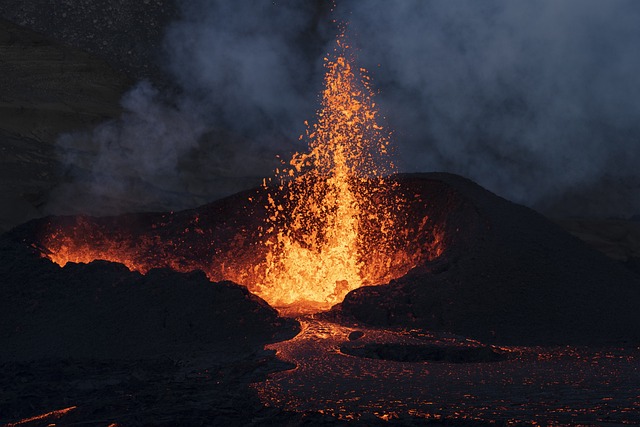
In Recent Weeks, the Attention of the European Scientific Community has been Captured by Growing Concern About the Risk of the Grindavic Volcano in Iceland and other Potentially Dangerous Eruptions Across the Continent.
The Grindavik volcano, known for its past volcanic activity, is currently showing signs of revival, raising questions about the safety and preparedness of surrounding communities. Furthermore, the general situation of European volcanoes is now in the spotlight, calling for the importance of constant monitoring and planning to mitigate the potential impacts of volcanic eruptions.
Grindavic is one of several volcanoes in Iceland, a nation located at the crossroads of the North American and Eurasian tectonic plates. This unique geological position makes Iceland a region subject to intense volcanic activity. Grindavic, in particular, has a history of significant eruptions, the last of which dates back to 2010, when the eruption of the Eyjafjallajökull volcano caused havoc with European air traffic due to clouds of volcanic ash in the atmosphere.
Geological experts have recently detected signs of seismic activity and ground deformation in the Grindavic region, indicating the awakening of the volcano. These signals have been carefully monitored through seismic networks and advanced geodetic instruments, which provide scientists with crucial data to understand the underground processes that precede a volcanic eruption. Increasing seismic activity is often an early indicator of an impending eruption, increasing the need for continuous surveillance.
One of the most concerning aspects of a volcanic eruption is the potential impact on air traffic. Volcanic ash, once released into the atmosphere, can damage aircraft engines and compromise flight safety. The experience of the Eyjafjallajökull eruption in 2010 clearly demonstrated how a single volcanic eruption can cause large-scale severe disruption to European air traffic. Therefore, it is crucial to have well-defined contingency plans and risk management protocols to mitigate security and economic impacts.
Given the high probability of Grindavic erupting, Icelandic authorities are stepping up efforts to prepare local communities and develop effective evacuation plans. Preparedness also includes communicating information to affected populations in a timely manner, educating them about the risks associated with volcanic eruptions and providing clear instructions on how to respond in the event of an emergency. The Grindavic situation raises further reflections on the general situation of European volcanoes and, although Europe is not often associated with volcanic eruptions, the presence of active volcanoes in different regions of the continent requires constant vigilance. Italy, for example, is known for its volcanic activity, with Vesuvio and Etna posing potential threats to the surrounding population and not yet given the needed attention, as history would suggest, by the international scientific community.
Managing volcanic risks requires advanced research and international collaboration between scientists trained in the constant development of predictive models and advanced technologies to monitor earthquake activity effectively. Sharing data and information between nations is essential to proactively address transboundary volcanic threats to avoid future disasters that would compromise the health of an entire nation, in the short and long term.
The real risk of an eruption of the Grindavic volcano in Iceland in recent days raises serious questions about the safety and preparedness of the communities involved but the situation also highlights the need for continuous surveillance of European volcanoes and international collaboration to address potential threats. It is essential to learn from past events, such as the eruption of Eyjafjallajökull or the even more dramatic and apocalyptic ones in the ancient times, to ensure that authorities and communities are ready to respond in a timely and effective manner to unfortunately increasingly realistic emergency situations.



 Subscribe
Subscribe